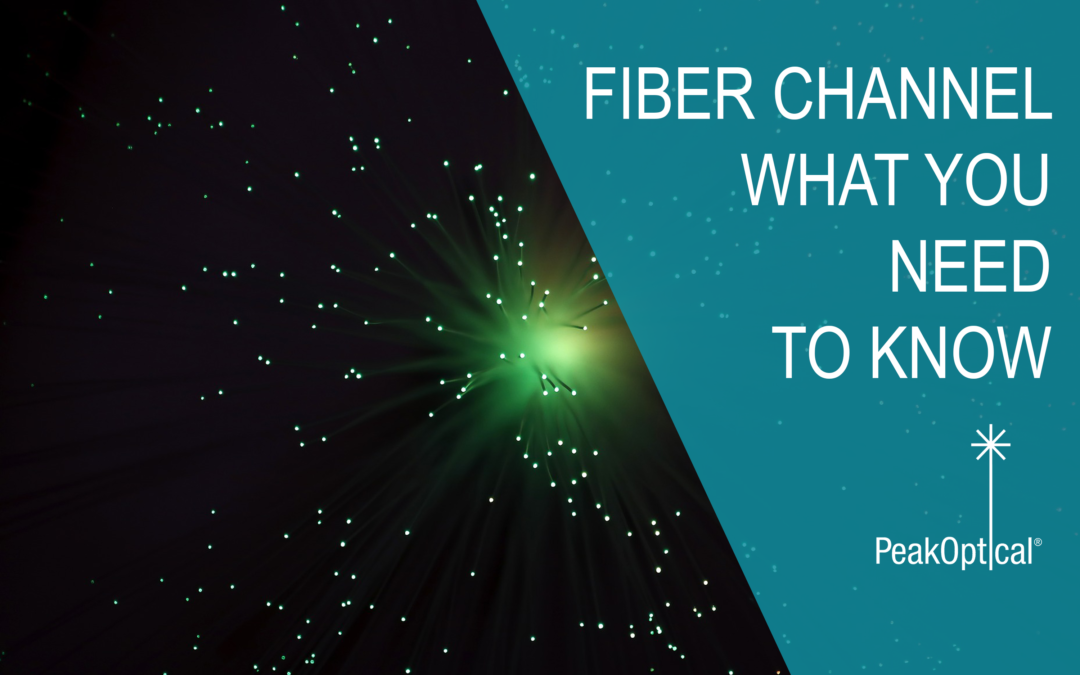This week PeakOptical is discussing Fiber Channel. Fiber Channel is a high speed and high-performance network technology used in the connection of servers with the data storage area networks. It handles the disk storage for application on corporate networks and supports data backups, clustering and replication.
Initially, Fiber Channel was designed to operate at a maximum rate of 1 Gbps. With the development of newer technologies, the standard rate increased up to 128 Gbps. The 8, 16, and 32 Gbps are also still in use. It is split into five layers
- FC-4 – Protocol-mapping layer
- FC-3 – Common services layer
- FC-2 – Signalling Protocol
- FC-1 – Transmission Protocol
- FC-0 – PHY connections and cabling
Over time, Fiber Channel gained the reputation of being quite expensive to build, difficult to manage, and incompatible to other vendor products, making it hard to upgrade. However, multiple storage area network solutions use this technology; and one of the reasons for that could be that it supports both copper and fiber. Even so, copper limits the Fiber Channel to a maximum reach of 100 feet, whereas fiber optic can reach up to 6 miles. ‘
Source: LifeWire


